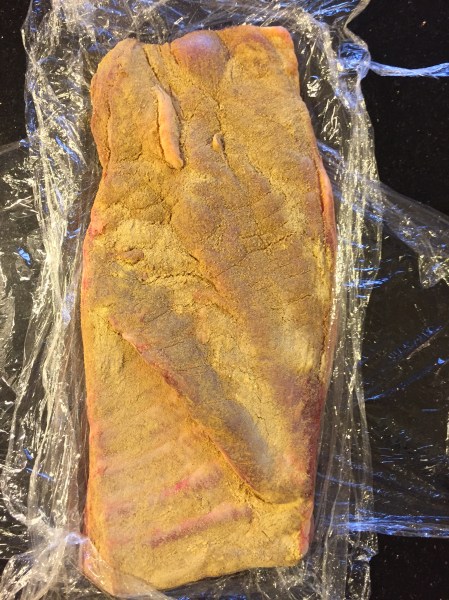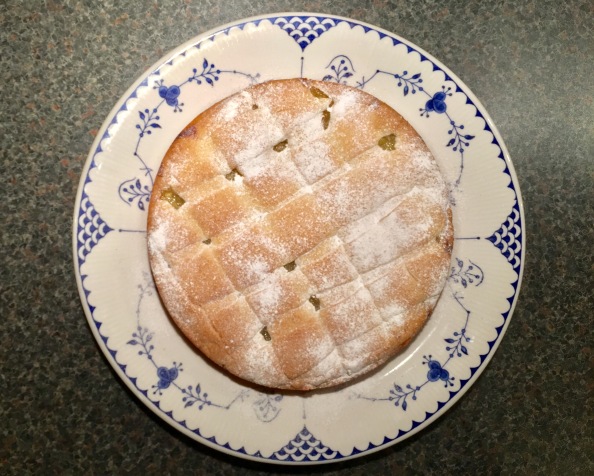Having consumed during the Christmas period one massive turkey, a Norwegian spiced pork belly, a baked ham and a venison casserole, we are craving vegetables in this house. Sprouts, red cabbage, salads and lots of fruit also featured heavily on the menu but meat predominated. I’m not saying we’re going in for Veganuaray or any other New Year trend; it’s about needing to reset our dietary priorities. This month I’m going to cook without meat during the week but we’ll continue to have a roast or other meat dish on Sundays.
With this in mind I was delighted to pore over one of my Christmas presents from my sons: Joe Trivelli’s book, The Modern Italian Cook. I confess I was not familiar with Trivelli, who is head chef of the River Café, but I am glad to have been introduced. And Diana Henry, whose recipes you know I love, gave it a mention in her Telegraph column. If that’s not a recommendation, I don’t know what is.
It’s a beautiful book and I want to make everything in it but so far I’ve only got as far as making one of the dishes twice, first as a starter on New Year’s Eve and then last night we had it as our main meal with some fresh bread to mop up the juices. The recipe works well in the Aga.
Jerusalem artichokes with fennel and peas
Serves 4 (or 6 as a starter)
Ingredients
- 500g Jerusalem artichokes
- 2 fennel bulbs, trimmed
- ½ large or 1 small red onion, sliced
- 2 garlic cloves, crushed
- 500g frozen peas
- 10 mint leaves
- 2 parsley sprigs or a handful of chopped parsley
- 1 lemon
- Sea salt, black pepper and extra virgin olive oil
Method
- Peel the artichokes and cut into wedges. Keep under water to stop them discolouring.
- Remove any stringy-looking outer parts of the fennel and cut into thin wedges. Toss in some lemon juice to prevent them discolouring
- Heat a tablespoon of oil in a heavy-based, wide pan with a lid and sweat the onion with a pinch of salt. You could place the pan in the simmering oven at this point
- Once the onion is soft add the garlic and a minute or two later the fennel. Stew with the lid on for five minutes (or longer if you put it in the simmering oven)
- Add the Jerusalem artichokes, peas and some black pepper and continue to stew. Trivelli says to do this for 10 minutes over a low heat but my artichokes needed a lot longer than this (in the simmering oven) before they were soft. In fact, to try to speed things up I put the pan in the baking oven for a while. And Trivelli is right to say that Jerusalem artichokes cook unevenly: I found that when some wedges were soft and tender, others were still hard. But your patience will be rewarded, I promise you
- Once your artichokes are cooked, check the seasoning, add your herbs and stir them through with some extra virgin olive oil
- Serve with wedges of lemon to squeeze over



















 Meanwhile the Sunday roast continues to happen in our house and last Sunday it was gigot boulangère. If ever there was a dish that lends itself perfectly to Aga cooking, this is the one. If you love lamb and love boulangère potatoes, then this is one for you. On Sunday morning, after a cup of tea in bed with the papers on my iPad, I got up at 8 to prepare this dish. My neighbours may have caught a glimpse of me fetching some rosemary and nearly catching my death in my garden in my dressing gown. In less than an hour though lunch was in the oven, to be more or less ignored until we were ready to eat it at 2pm.
Meanwhile the Sunday roast continues to happen in our house and last Sunday it was gigot boulangère. If ever there was a dish that lends itself perfectly to Aga cooking, this is the one. If you love lamb and love boulangère potatoes, then this is one for you. On Sunday morning, after a cup of tea in bed with the papers on my iPad, I got up at 8 to prepare this dish. My neighbours may have caught a glimpse of me fetching some rosemary and nearly catching my death in my garden in my dressing gown. In less than an hour though lunch was in the oven, to be more or less ignored until we were ready to eat it at 2pm.

























































 Don’t worry: you can just patch them together as you place them. As you can see from the photos, mine does not look remotely professional
Don’t worry: you can just patch them together as you place them. As you can see from the photos, mine does not look remotely professional